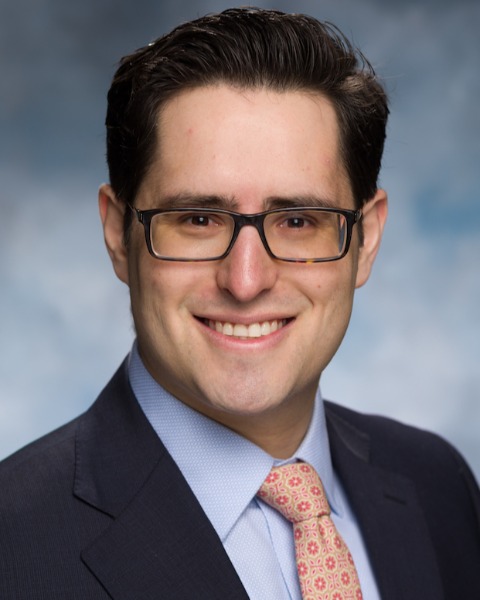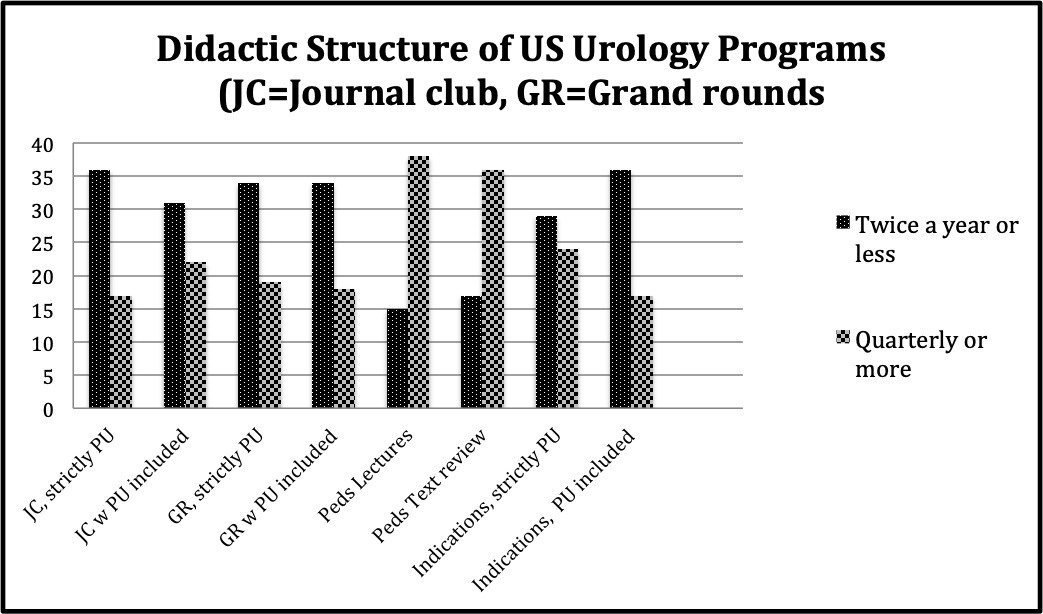Back
Poster, Podium & Video Sessions
Moderated Poster
MP19: Education Research II
MP19-04: Pediatric Urology Across US Residency Programs: A Survey of Residency Program Directors to Identify Differences in Education
Saturday, May 14, 2022
7:00 AM – 8:15 AM
Location: Room 228
Daniel Tennenbaum*, Brooklyn, NY, Lane Palmer, New Hyde Park, NY

Daniel Tennenbaum, MD
Maimonides Medical Center
Poster Presenter(s)
Introduction: Though all urologic training programs in the United States adhere to baseline thresholds of training, each program is able to offer different training experiences to their residents and trainees. In this study, we seek to determine differences in pediatric urology (PU) training amongst US residencies and their impact on influencing career choice.
Methods: Our survey was designed based on similar surveys sent to program
directors of other specialties. The survey was sent by e-mail to the 142 AUA
residency program directors.
Results: The response rate was 37% (53/142). Residents from 42 (79%) programs pursued PU fellowships within the last five years. All PU experiences were described as either favorable (29, 55%) or very favorable (24, 45%). Programs with very favorable experiences (p=0.0187), whose PU rotations were as U3 or U4 year (p=0.0465), or whose residents had more than 1 PU rotation (p=0.0481) were more likely to have residents pursue PU fellowship than those with favorable program experiences, non-senior rotations, or who had 1 or less dedicated PU rotation. There was no statistically significant relationship between favorability and either rotating at a children’s hospital or the presence of a PU fellow on rotation. While there was considerable variability in didactic criteria, there was no statistically significant relationship noted. Image 1 demonstrates differences in didactic curriculum. PU-focused didactics do not appear to occur often, other than journal club and text review.
Conclusions: While there is expected variability of experience from urology residency program to program, our survey demonstrates broad differences amongst programs in regards to a resident’s PU exposure and experience. We identify very favorable resident PU experiences, the opportunity to rotate as a senior resident, and more than one dedicated PU rotation as significant influences for pursuit of a PU fellowship.
Source of Funding: None

Methods: Our survey was designed based on similar surveys sent to program
directors of other specialties. The survey was sent by e-mail to the 142 AUA
residency program directors.
Results: The response rate was 37% (53/142). Residents from 42 (79%) programs pursued PU fellowships within the last five years. All PU experiences were described as either favorable (29, 55%) or very favorable (24, 45%). Programs with very favorable experiences (p=0.0187), whose PU rotations were as U3 or U4 year (p=0.0465), or whose residents had more than 1 PU rotation (p=0.0481) were more likely to have residents pursue PU fellowship than those with favorable program experiences, non-senior rotations, or who had 1 or less dedicated PU rotation. There was no statistically significant relationship between favorability and either rotating at a children’s hospital or the presence of a PU fellow on rotation. While there was considerable variability in didactic criteria, there was no statistically significant relationship noted. Image 1 demonstrates differences in didactic curriculum. PU-focused didactics do not appear to occur often, other than journal club and text review.
Conclusions: While there is expected variability of experience from urology residency program to program, our survey demonstrates broad differences amongst programs in regards to a resident’s PU exposure and experience. We identify very favorable resident PU experiences, the opportunity to rotate as a senior resident, and more than one dedicated PU rotation as significant influences for pursuit of a PU fellowship.
Source of Funding: None


.jpg)
.jpg)